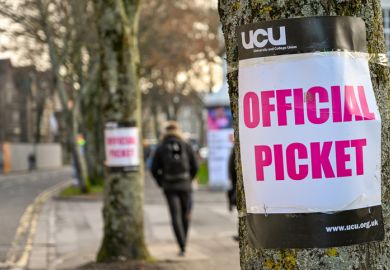Salary cuts or freezes have been rejected by staff at one Australian university, endorsed at a second and flagged at a third, as a fourth prepares to cull more than 100 positions.
The University of Wollongong is asking its employees to reconsider, after almost two-thirds of survey respondents opposed pay cut proposals that vice-chancellor Paul Wellings says would have saved about 200 jobs.
But a staff vote at the University of Tasmania (UTas) has backed vice-chancellor Rufus Black’s plan for them to forgo a scheduled salary increase and defer other pay rises. And Southern Cross University will seek staff’s agreement to postpone salary increases and trim working hours.
Meanwhile, the equivalent of up to 145 full-time jobs will go at Charles Sturt University (CSU), where the pandemic has exacerbated an anticipated budget deficit. Acting vice-chancellor John Germov said that between 100 and 110 full-time equivalent positions had been identified for “potential redundancy” while another 35 vacant jobs would not be filled.
Professor Germov warned that a future review focusing on faculty staff “may involve further recalibration”. He said that CSU would fulfil its obligations under the university’s enterprise agreement “but we want to manage this with compassion and sensitivity”.
CSU has also announced plans to discontinue more than 600 subjects that attracted few or no enrolments last year. “Subjects with only a few students are not only financially non-viable, but do not deliver a great student experience,” Professor Germov said. “We are spread too thin.”
The announcements follow the collapse of a “national jobs protection framework” drafted by the National Tertiary Education Union (NTEU) and a group of vice-chancellors led by CSU incumbent Andrew Vann.
The framework could have given universities extra discretion to cut employee costs in return for job security guarantees and independent oversight of their savings measures. It collapsed after more than 20 vice-chancellors, including Professor Vann himself, decided not to sign up.
However, UTas management has won staff and union backing by proposing a local variation of the framework. Professor Black said that more than half of eligible staff had voted on his proposal, with 90 per cent endorsing it.
“That people have so strongly supported sharing the burden of the impact to save jobs through wage restraint…is a mark of the strength of our community,” he told staff.
Wollongong, which rejected the framework, has not inspired such solidarity. Surveyed on their views about two salary reduction proposals to minimise job losses, 62 per cent of respondents said that they would prefer neither.
Professor Wellings urged a rethink. “This pandemic has changed everything,” he said. “No university is immune from the global recession we are now in and doing nothing is not an option.”
He said “no feasible scenario” would achieve the “necessary savings in employment-related expenses” without either sacrificing salaries and conditions or trimming the workforce. “Our only choices are in how we balance these two approaches.”
NTEU branch president Georgine Clarsen said that the union remained opposed to the proposals, chiefly because they still entailed at least 150 job losses and the university would not rule out forced redundancies.
“We are not unsympathetic,” Dr Clarsen said. “Covid has happened. It’s not [management’s] fault. But we won’t endorse involuntary redundancies.
“This institution is well-placed to deal with this crisis without massive job losses – all the public records show this.”
Register to continue
Why register?
- Registration is free and only takes a moment
- Once registered, you can read 3 articles a month
- Sign up for our newsletter
Subscribe
Or subscribe for unlimited access to:
- Unlimited access to news, views, insights & reviews
- Digital editions
- Digital access to THE’s university and college rankings analysis
Already registered or a current subscriber?










